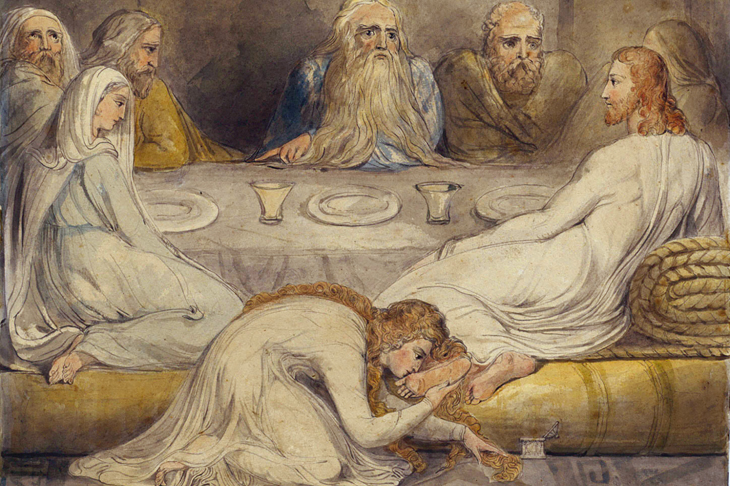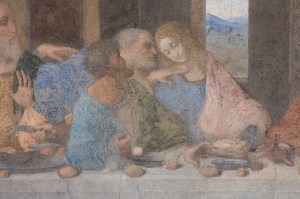It is always interesting to see what art historians get up to when none of the rest of us is looking. It is hard to know what the inspiration for The Mummy’s Foot and the Big Toe can possibly have been, but if this very short book offers the kind of approach that will go down well in the enclosed world of the academic conference, Alan Krell might find the common reader a tougher nut to crack.
Having said that, however, those with a taste for such things will probably find plenty to enjoy in a book that ranges from the bare foot as symbol of freedom to the foot as ‘fetish and fancy, object of desire and of abjection, and vehicle for the comic, the absurd and the empowering’ in the context of literature, art, sport and film. Krell is not one to shy away from pedal metaphors, aphorisms and puns, so to say that this is a huge task for a stocking-filler of a book is not altogether inappropriate.
Krell’s five chapters kick off with a critique of Theophile Gautier’s short story ‘The Mummy’s Foot’, a conte fantastique about the detached foot of a mummified Egyptian princess which moves, talks and conjures up its footless owner. It also provides the author with a platform for discussing orientalism in western art forms, Freudian analysis of fetishism and Marxist interpretations of commodification.
Succeeding chapters deal with an essay by another French writer, Georges Bataille, photographs by the Australian, Pat Brassington, Biblical foot-washing scenes, Chinese foot-binding, long-distance runners and, finally, feet in films from Charlie Chaplin to Quentin Tarantino. It is a great hotch-potch and, pace the heavy-duty semiotics brought to bear at every juncture, comes over like a seminar in which the powerless reader longs to take part — querying, arguing, contesting, asking for more information. (Or less, as Krell has an annoying didactic urge to gloss the bleeding obvious.)
Is it quite fair, for instance, to see a resonance between the surrealist-influenced images of Pat Brassington and photographs of Oscar Pistorious demonstrating his physical disability in court? Could we not rather discuss the striking echo of Francis Bacon? Was it really the soles of the feet of Nicole Richie climbing out of the sea in St Barthélemy that the paparazzo was so pleased to capture, or some other part of her anatomy? And yes, having pointed it out, the sandals in Duccio’s ‘Christ Washing the Disciples’ Feet’ do look disturbingly like living things slithering out of the painting; but does it really turn Christ’s gesture into ‘a troubled and troubling activity’?
Or take Jean Béraud’s ‘St Mary Magdalene in the House of Simon the Pharisee’, the sensation of the Champs de Mars summer exhibition 1891. This deeply unsettling image shows a group of male diners in contemporary evening dress crowding around the figure of Christ in black and white robes. Prostrate at his invisible feet is an elegantly dressed Parisienne, robed, as the art journal of the day has it, in Worth or Doucet. Krell points up the visual metaphor of the fallen woman (while explaining to the reader what a fallen woman is), sees an echo of Augustus Egg’s ‘Past and Present’ of 1858, bemoans the lack of foot washing, drying or anointing and laments the absence of wit or irony in comparison with the work of Manet. End of discussion, but — again — shouldn’t there be something else here, some reaction, perhaps, to one 19th-century critic’s quoted verdict that the painting is ‘wilfully offensive’; some comment on the perennial use of anachronistic context to put across the Christian message?
While this little study is, in many respects, a jeu d’esprit (a light-hearted display of wit or cleverness), at least for the author, I’m still not sure that, despite the populist format, it will work for a wider audience. The language at times is densely academic and some of the images discussed — Zola Budd photographs for instance — are not reproduced at all, others appear so small — a 17 and-a-half foot wide Tintoretto reducedtom 3 and-a-half inches — that they can barely be made out, and while in a digital age this is hardly a problem, it is vaguely unsatisfactory.
Krell has an eye for the odd, certainly, and there are some fascinating illustrations. And if nothing else, not many authors would be able to get Zola Budd, Mary Magdalene and Uma Thurman into the same book.
















